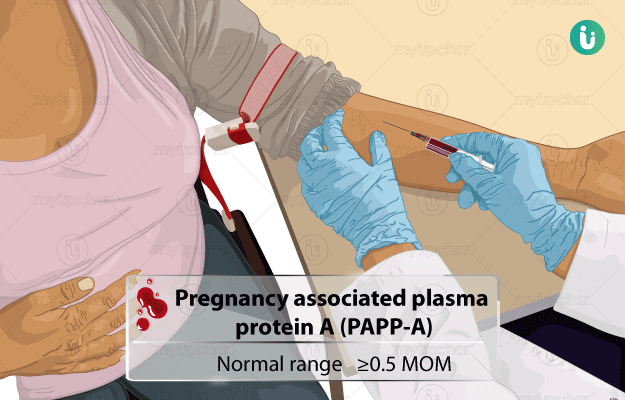PAPP-A results are written in terms of multiples of meridian that is how much the results deviate from a median value.
Normal results:
PAPP-A values greater than or equal to 0.5 multiple of median (MOM) is considered normal. Normal result indicates that you have a low likelihood of getting high BP in later months of pregnancy and your baby would not have any chromosome disorders (Down syndrome and Edwards syndrome).
Abnormal results:
PAPP-A values lower than 0.5 MOM are considered abnormal. Abnormal PAPP-A value is associated with a higher incidence of preterm birth, growth restriction and death in babies with a good chance that the mother would develop high BP during the later months of pregnancy.
Although the first-trimester screening (including the other two tests in combination with PAPP-A) can identify the majority of complications (about 85% women carrying babies with Down syndrome and 75% with Edwards syndrome), false-positive results are seen in 5%-10% of normal pregnancies. Therefore, it means that the test may be positive, but the pregnancy outcome may be uneventful.
Conversely, not all positive tests may be diagnostic of foetal abnormalities. Although they indicate a higher risk, the probability of having a baby with a chromosomal defect occurs only in a small section of women with a positive screen test. Similarly, low concentrations of PAPP-A in the maternal blood are a poor predictor of future adverse pregnancy outcomes.
So, even if the test result is positive or abnormal, confirmatory tests may have to be performed. Your doctor will precisely explain what the results mean for you.
Disclaimer: All results must be clinically correlated with the patient’s complaints to make a complete and accurate diagnosis. The above information is provided from a purely educational point of view and is in no way a substitute for medical advice by a qualified doctor.


































